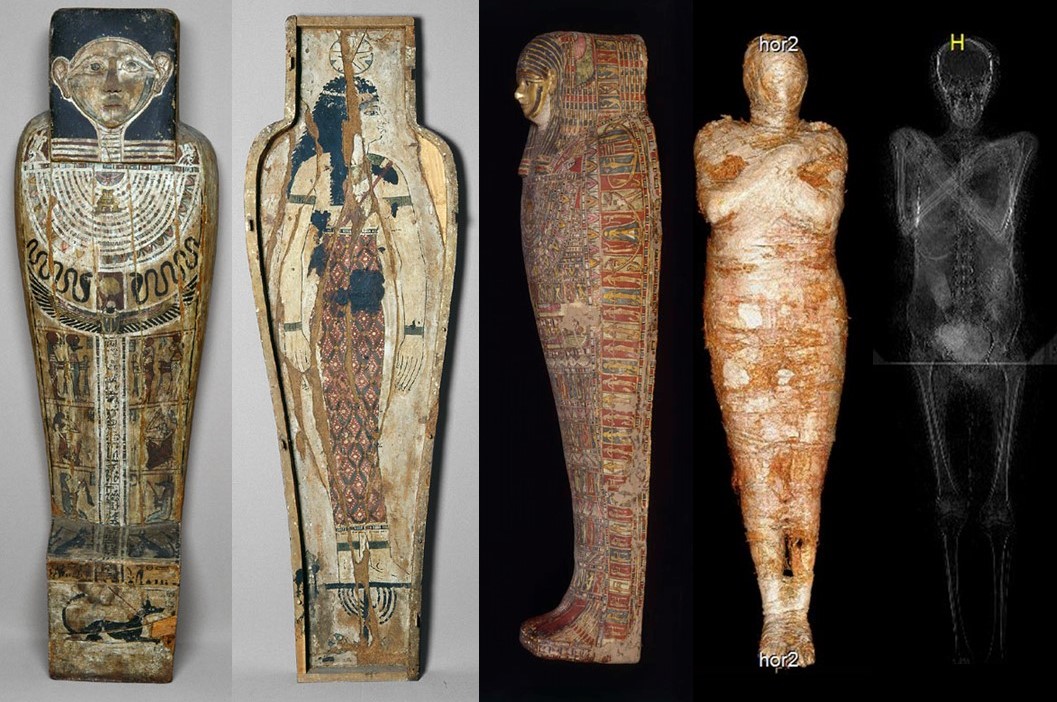When archaeologists first uncovered the 44-cm-long coffin back in 1907, they assumed the tiny package inside contained the mummified organs that were removed from the dead prior to burial. It’s only now that they’ve been able to catch a glimpse inside the bandages to find a tiny human inside.
“For many years it was thought that the contents were the mummified remains of internal organs that were routinely removed during the embalming of bodies,” the Fitzwilliam Museum in Cambridge, England said this week.

The mummy is now on display at the museum, after having undergone thorough – but entirely non-invasive – analysis.
Egyptologists at the museum first tried to peer inside the tightly wound package using X-rays, but the results were inconclusive. So they relocated to the University of Cambridge’s Department of Zoology to borrow their CT scanner, and were finally able to see the outline of what appears to be a miscarried baby.
Incredibly, judging by the results of the CT scan below, the team could even make an estimate about how old the child was when it died.
According to Ian Johnston from The Independent, the infant would have been miscarried between 16 and 18 weeks into a pregnancy. Just for reference, that coffin is about the size of a shoebox.

The Fitzwilliam Museum
“The cross-sectional images this produced gave the first pictures of the remains of a tiny human body held within the wrappings, which remain undisturbed,” the museum said.
“From the micro CT scan, it is noticeable that the foetus has its arms crossed over its chest. This, coupled with the intricacy of the tiny coffin and its decoration, are clear indications of the importance and time given to this burial in Egyptian society.”

We’ve seen mummified foetuses before – Tutankhamun’s tomb contained two of them, estimated to have died at about 25 weeks and 37 weeks of gestation – but this one is by far the youngest.
While the find is incredible simply because we’re looking at a 2,000-year-old baby, with all 10 fingers and toes perfectly preserved, it also tells us a lot about the ancient Egyptian belief system. Even an unborn child was given a chance to take a shot at an afterlife, it seems.

“This ground-breaking find educates us further still in our conception of just how precious the unborn child was in Ancient Egyptian society,” Julie Dawson, head of conservation at the Fitzwilliam Museum, told the press. “The care taken in the preparation of this burial clearly demonstrates the value placed on life, even in the first weeks of its inception.”
source:cam.ac.uk








